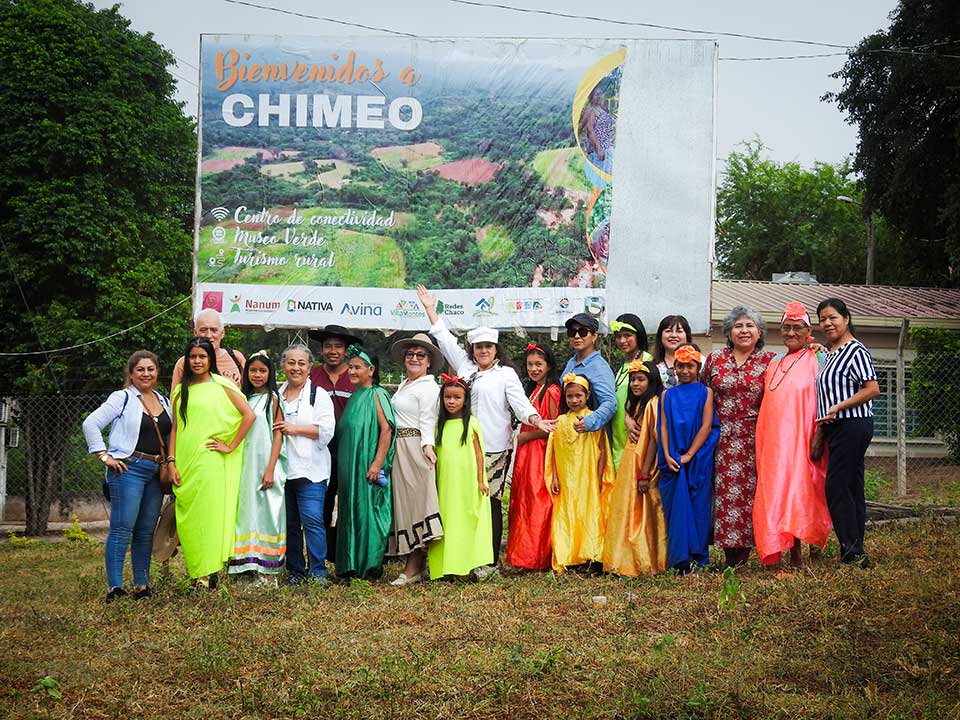

The Pilcomayo route
RESEÑA DEL TOUR: En este tour recorreremos varios kilómetros de belleza natural, paisajes, cultura, historia, naturaleza, tradición chaqueña y culturas
Our objective is: Study the distribution, behavior, population dynamics, reproductions of native Chaco species of aquatic, semi-aquatic, terrestrial and aerial fauna, some endemic or threatened for conservation, management and support in decision-making in national, regional and municipal politics.
The research work is based on the following fundamental pillars:
1.- Research and monitoring
Scientific research and monitoring of threatened fauna and flora species in the Chaco, without scientific record, new to science, as well as the ecosystems where these Chaco species live.
2.- Declaration Proposals
Consolidate municipal, regional, and departmental declaration processes as scientific Natural Heritage for species and biodiverse sites of scientific environmental importance in the South American Chaco.
3.- Economic alternatives
Generate alternative economic solutions for local communities based on nature and sustainable productive development that protect the biodiversity of the Chaco
4.- Environmental Education
Strengthen environmental education at the local level, generating citizen awareness and love for Chaco nature for conservation.
The Gran Chaco Americano constitutes an ecoregion with extensive forest cover that occupies more than 1 million km2 between Argentina, Paraguay, Bolivia and a small part of Brazil, it is the second forest area in South America after the Amazon. Of the total of the Gran Chaco, 62% is located in Argentina, 22% in Paraguay and 16% in Bolivia. It presents a large latitudinal extension from 18° to 39° LS, together with great variability in both average temperature (between 18 and 28°C) and precipitation (from 300 to 1200 mm/year). However, a common characteristic of much of the ecoregion is that it presents a water deficit during most of the year.
In the Gran Chaco Americano there are more than 3,400 species of plants with endemic importance, in addition to 500 species of birds, 150 species of mammals, 120 species of reptiles and Pécari quimilero (Catagonus wagneri) y el Guanaco Chaqueño (Lama guanicoe) the only camelid adapted to the Chaco, many of the species it has are listed by CITES (Convention on International Trade in Endangered Species of Wild Fauna and Flora) such as: the Palo Santo (Bulnesia sarmientoi), jaguar (Panthera onca), Loro hablador (Amazona aestiva). Another of the outstanding characteristics of the Gran Chaco is its flat relief (with the exception of the Chaco Serrano). Most of the rivers that cross the ecoregion originate outside it and present blockages and hastily abandoned meanders that generate important wetlands such as highly complex hydrographic systems such as the Parapetí, Pilcomayo and Bermejo rivers.
“THE CONSERVATION OF BIODIVERSITY IN THE CHACO IS EVERYONE'S TASK”
If you wish to support the Scientific Research program on flora and fauna of the Chaco to help us study, monitor, raise awareness, generate reliable information for decision-making in public management and thus save the species and habitat of the Chaco, please donate.
Thank you for your support.


RESEÑA DEL TOUR: En este tour recorreremos varios kilómetros de belleza natural, paisajes, cultura, historia, naturaleza, tradición chaqueña y culturas


RESEÑA DEL TOUR: En este tour visitamos la comunidad de Chimeo distante a unos 12 km de la ciudad de
We are a non-governmental, non-profit organization, oriented towards environmental conservation, in search of sustainable management of natural resources, generating development alternatives prioritizing economically disadvantaged áreas.